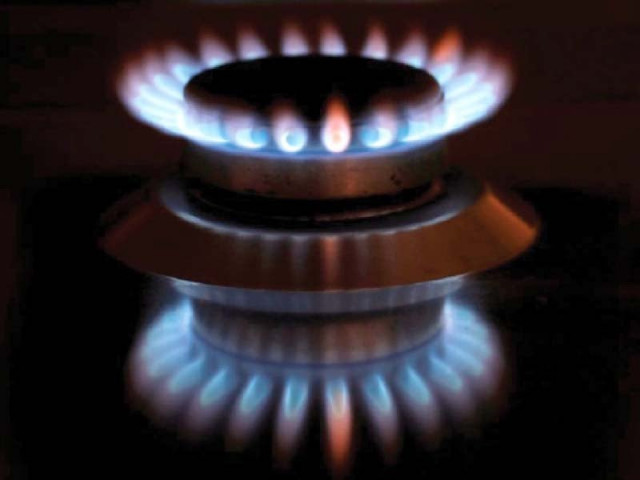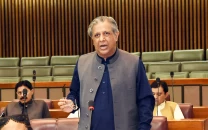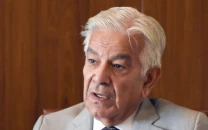Govt plans special gas tariff for low-income group
Officials from petroleum, finance depts and OGRA discuss gas price hike by 45-50%

The caretaker government’s working on a plan to introduce a special gas tariff for the low-income group in Balochistan in order to offset the impact of a possible tariff hike, sources told The Express Tribune on Monday.
According to them, the issue was also discussed with the management of the Sui Southern Gas Company Limited (SSGCL) that operated in the Balochistan province. The measure was proposed in the wake of the winter season, which is just months away.
“We have to take care of the low-income consumers through safety nets for instance in Balochistan, low-income consumers become comparatively more vulnerable because of the cold wave that hits the province every year during the winter season,” a source said.
“We want a special tariff for Balochistan’s low-income consumers but it will cost Rs10 billion a year and if kept in view of the previous year's accumulated impact, it will no more be sustainable,” the source continued, adding that the government wanted to save the low-income consumers from the gas price shock.
Other sources said that there was a proposal that direct subsidy should be given to the low-income gas consumers to save them from the impact of increasing gas prices.
“The government may give subsidy through the BISP (Banazir Income Support Programme) to low-income group of gas consumers.”
At present, the government uses cross subsidy for the low-income consumers of gas. The sources maintained that the government had intensified its efforts to finalise the natural gas price increase scenario, as the International Monetary Fund (IMF) had stepped up pressure to jack up the gas rates.
Senior officials of the petroleum and finance departments as well as the Oil and Gas Regulatory Authority (Ogra) put their heads together here on Monday to finalise the gas increase by 45-50%.
“Yes, the IMF has increased its pressure on the government to notify the gas price hike from July 1, 2023, which Ogra determined for the consumers, on June 2, 2023,” one of the top officials of the energy ministry told The Express Tribune.
On June 2, Ogra had announced a 50% increase or Rs415.11 per MMBTU for the consumers of the Sui Northern Gas Pipeline Limited (SNGPL), pushing the subscribed gas price up to Rs1238.68 per MMBTU. The regulator increased the gas price by 45% or 417.23 per MMBTU for consumers of the SSGCL.
“The SNGPL still has the previous year’s accumulative shortfall of Rs560.378 billion up to FY23, while the SSGCL has a shortfall of Rs97.388 billion and this is how the existing shortfall of both the gas companies stands at Rs657.766 billion,” another sources said.
The sources said that an amount of Rs500 billion had been added to the circular debt in the gas sector because of the delay in revision in gas prices from July 1, 2023.
The official said that the people living in far-flung areas are compelled to use the costly gas cylinders whereas those who were in the urban centres of the country and having piped gas connections were paying much lower prices.
The official also went on to say that the government was working on seven areas, including the area to optimise production from depleting gas fields and those wells that were closed down through using the latest technologies.
“We are also on our toes on how to increase oil and gas exploration and production activities across the country by resolving the crippling circular debt that has virtually slowed down the E&P activities,” the source said.
The source added that the government was working on a plan of unbundling gas companies in a bid to bring efficiency and reduce unaccounted-for gas (UFG). “We want to set up one gas transmission and split the gas utilities into small ones for reducing losses and better performance.”
A senior government official said that managing the circular debt was a big challenge for the government.
The government, he said, wanted to reduce the circular debt by making book adjustments between different companies.
At present, the liquefied natural gas (LNG) emerged as a major contributor to the circular debt. The previous governments had been directing expensive LNG to the domestic consumers to overcome gas crisis in winter season albeit at a high price.
Currently, three state-run utilities – the SNGPL, the Pakistan State Oil (PSO) and the Pakistan LNG Limited (PLL) – were trapped in the circular debt due to flawed policies of the previous governments that diverted the LNG towards domestic consumers in winter season.
The SNGPL was to pay Rs476 billion to the PSO on account of LNG supply. The SNGPL was also trapped in the circular debt as there was no legal framework to recover LNG bills from the domestic gas consumers.
The previous Pakistan Tehreek-e-Insaf (PTI) government got passed the weighted average cost of gas bill from parliament but it was challenged in a court in Sindh.
When the Pakistan Democratic Movement (PDM) led coalition government came, it never worked on implementing that bill as key gas-producing provinces like Balochistan, Sindh and Khyber-Pakhtunkhwa were not ready to provide subsidy to the consumers of Punjab.
“We are working on a plan to implement the weighted average cost of gas bill that could help reduce the circular debt and recover the full cost of LNG,” an official said.



















COMMENTS
Comments are moderated and generally will be posted if they are on-topic and not abusive.
For more information, please see our Comments FAQ